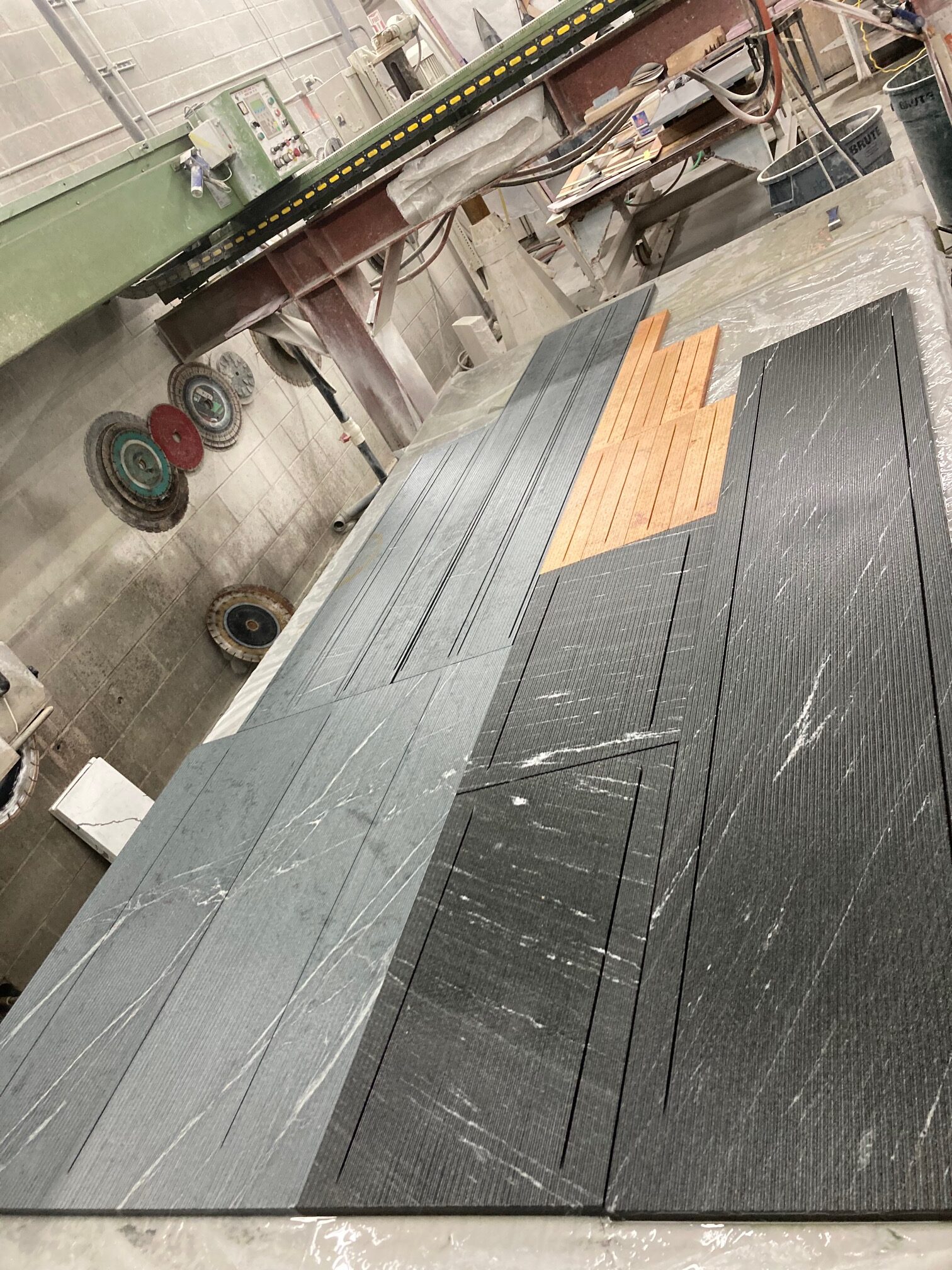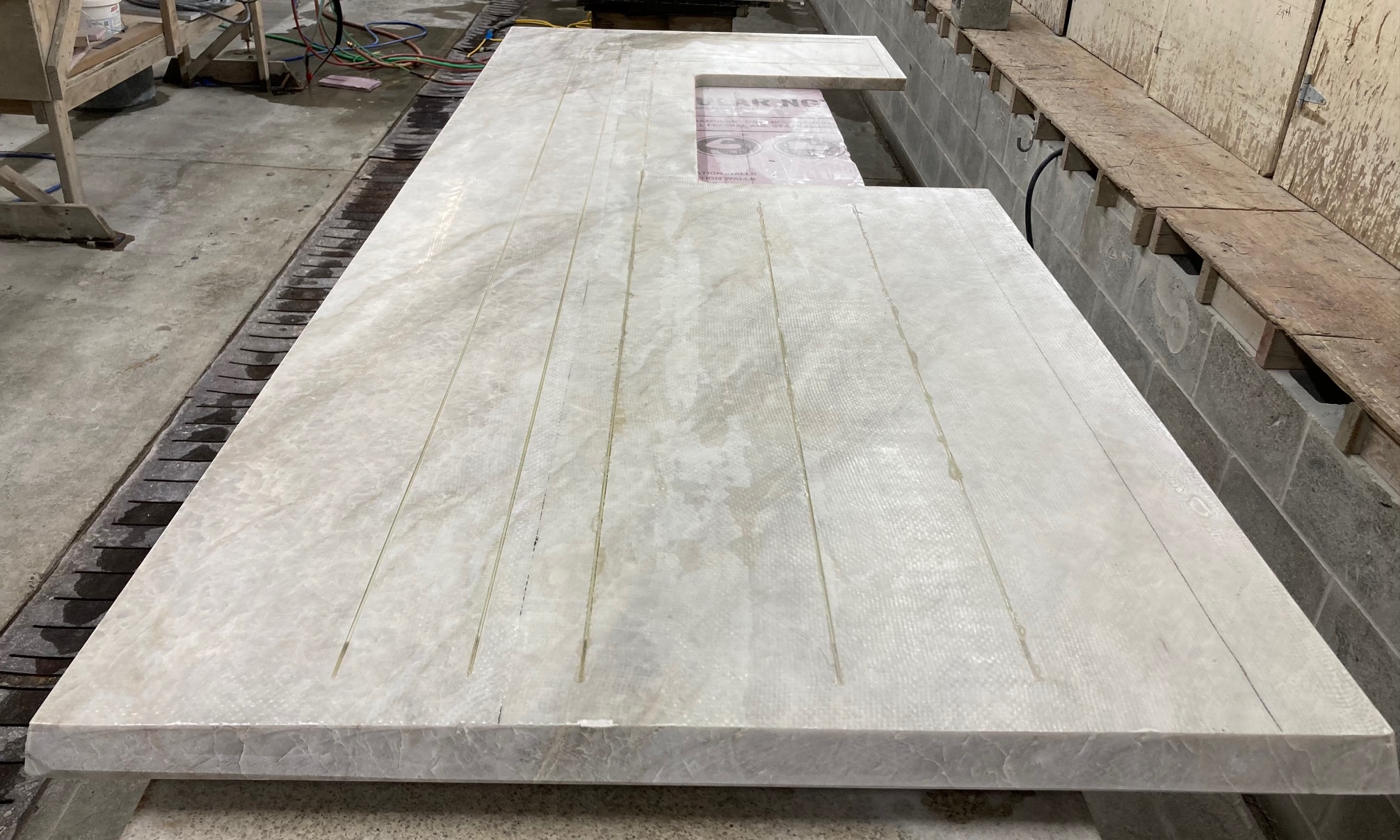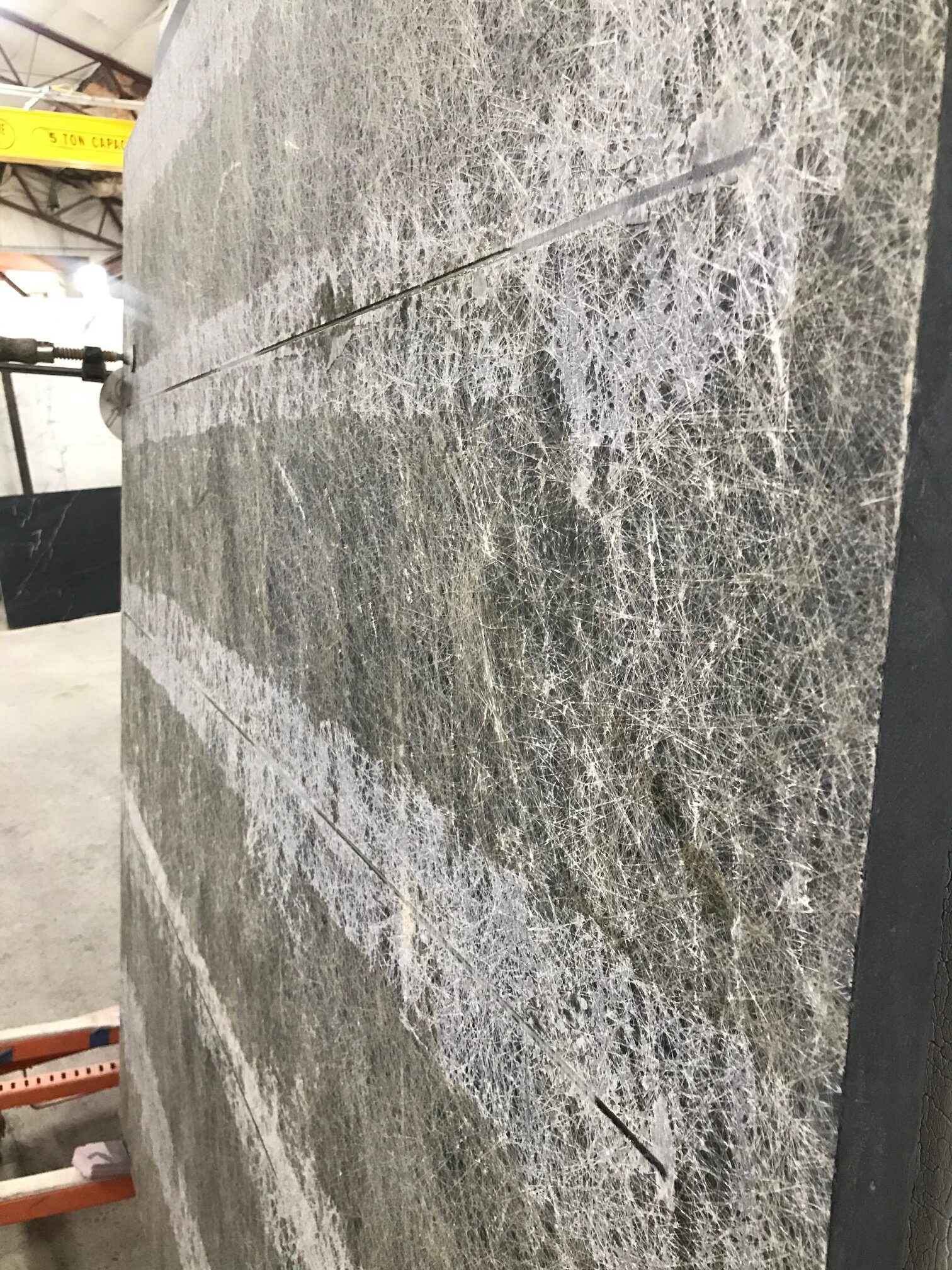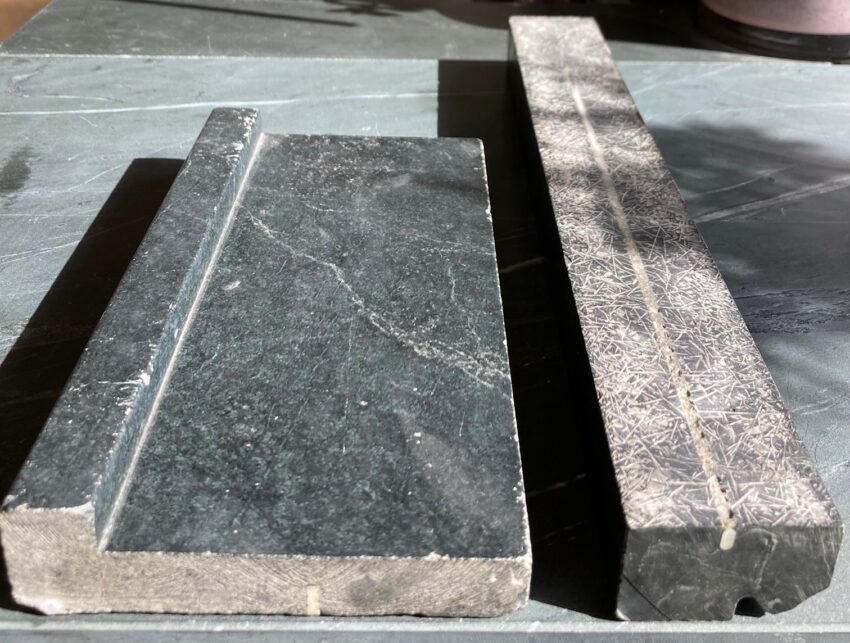Countertop rodding is a technique that is used for making a stone stronger. It’s embedding a 1/4″ fiberglass rod on the underside of the stone. This is necessary on any long narrow runs of counter or backsplash, the small section in the front and back of the sink cut out. And any natural materials with veining. This helps reinforce the structural integrity of the stone, to avoid breakage during transportation & installation. It’s similar to rebar in concrete. A lot of fabricators don’t do this anymore. Because they’re used to working with quartz where it’s not necessary. But when it comes to natural stone, it’s dense – but still can be fragile. Rodding stone is one of the stone reinforcement techniques in the guidelines from the Marble Institute of America used to strengthen stone countertops. After all, the veins formed during earthquakes; some more recent than others. We call it insurance. It requires a few extra steps, but is definitely worth it! Especially if you have Marble, Dolomite, Quartzite, Soapstone, Limestone, Travertine and some Onyx. If you don’t see it on your estimate for fabrication/installation, make sure to request it!
How to Rod Stone Countertops
We recommend Fiberglass Rod, as well as a high grade epoxy.
Here are the steps:
- Cut a groove on the back side of the stone
- Let dry before pouring resin in the groove to coat underside of the rod
- Insert the rodding into the channel and press down.
- If needed, put more resin in the groove to fill it to the top.
- Remove excess resin using a straight edge so its flush to the stone
- Allow the resin to fully cure/harden.
Once the resin dries, the stone is now reinforced by the rod and can continue to be fabricated. They will remain in the stone when installed. It’s on the back of the stone, so you won’t be able to see it when installed on cabinets.





